Running a successful online business relies as much on creating positive experiences and meeting customer expectations as on developing desirable products. That begins with the art of funneling consumers through your product listings and on to the checkout. But attracting new customers is expensive, so long-term eCommerce growth depends on cultivating a return clientele. And what happens in the eCommerce fulfillment process after someone clicks the Buy button is crucial to creating and retaining loyal customers. That’s why customer order cycle time is an essential key performance indicator (KPI) for online sellers to track and improve.

What is order cycle time?
Cycle time is the time it takes to complete a supply chain process. Order cycle time refers to the time it takes an order fulfillment warehouse to process an order, from receiving the order to handing it over to a carrier for delivery to the customer.
Customer order cycle time measures the efficiency of the fulfillment element of your supply chain. A deep dive into this KPI can show you where your order processing needs improvement so you can develop strategies to enhance your fulfillment logistics.
Order cycle time formula
Average order cycle time is usually measured in seconds. You can calculate it with this formula:
(number of hours of order fulfillment) * (3600[number of seconds per hour])/(total number of orders shipped that day) = average cycle time
For a 10-hour time period in which a 3PL shipped 1300 orders, the cycle time calculation is:
(10*3600)/1300 = 27.69 seconds per order
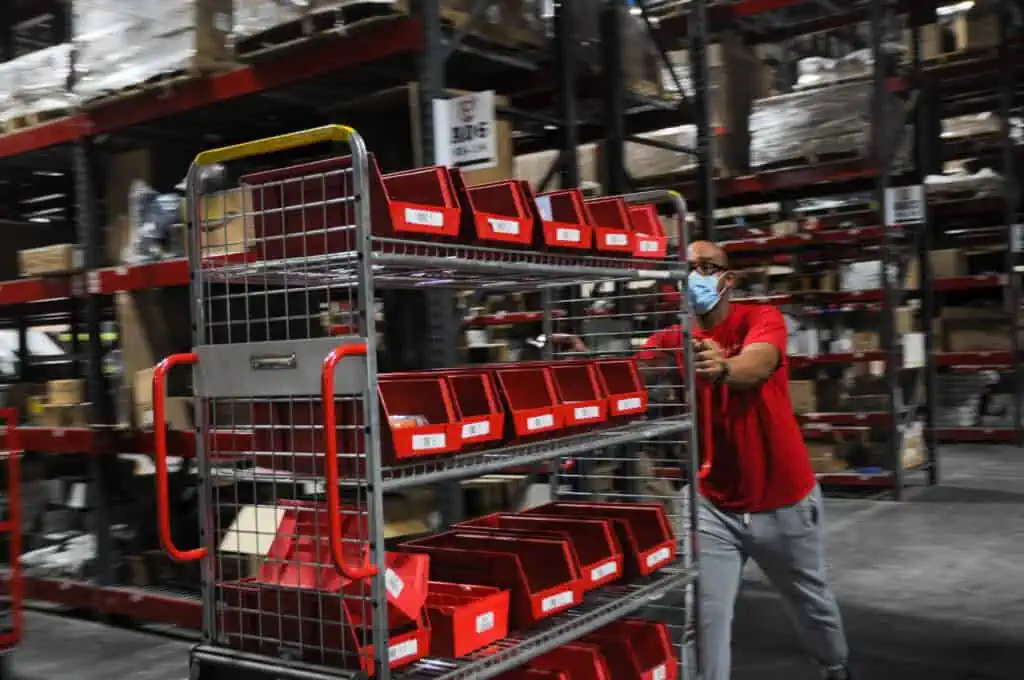
Lead time definition
Some people define order cycle time as beginning with the customer placing an order and ending with delivery. However, that is a more proper definition for customer order lead time. In order fulfillment, lead time is the time it takes from the order date to when the customer receives the delivery, and cycle time is an element of lead time.
What is takt time?
Takt time is another supply chain KPI that you might want to track. Takt time measures the frequency of receiving customer orders and can be used to calibrate the speed needed for cycle time. For example, if a fulfillment warehouse receives 1000 orders during an average 10-hour order handling window, that’s a new order every 36 seconds. In that case, the warehouse needs an order cycle time of 36 seconds or less to process all the orders on the same day.

Elements of order cycle time
We can break down order cycle time into four basic logistics processes. When you measure order fulfillment cycle time, you calculate the time it takes to complete these processes.
Order transmission
Customer order cycle time starts once the order reaches the warehouse. With eCommerce platform integration, order transmission typically takes only a few seconds. Using an automated system for order transmission is essential to reduce order cycle time.

Picking
After transmission, the warehouse management system places the order into the warehouse flow and gives it to a picker. The picker pulls the SKUs needed to fill the order.
Packing
The picker hands the order to a packer, who ensures that the products are correctly packaged, sealed, and labeled.
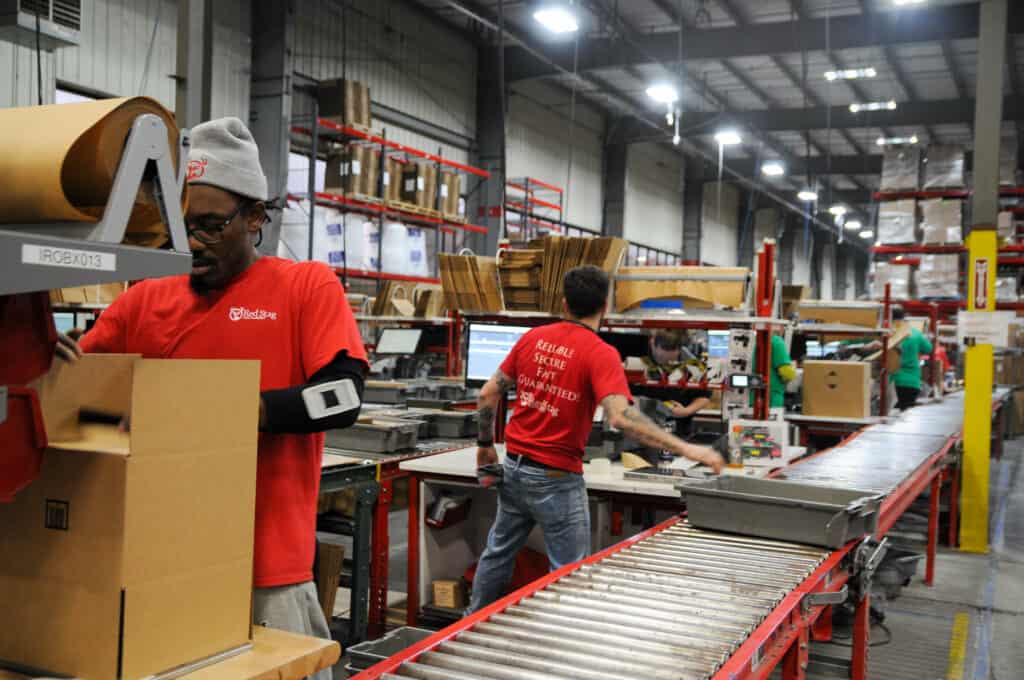
Shipping
The shipping station is the last stop in the customer order cycle. At the outbound dock, warehouse associates hand off orders to carriers such as FedEx, UPS, and USPS for delivery.
Promised vs. actual order cycle time: Managing customer expectations in an age of instant eCommerce
Online shoppers have had to accept fulfillment and shipping delays on top of supply chain disruptions during the pandemic, but that doesn’t mean they like waiting to receive their orders. The key to customer experience with delivery time is managing expectations. Your online store can do that by:
- Offering delivery windows with a range of times (i.e., “5-7 days”) during checkout
- Communicating delivery status to customers
- Giving a precise delivery date, once known
- Keeping in touch often, particularly about late deliveries
- Providing chatbots or customer service email contacts to respond to customer questions about order delivery
Consumers can live with longer order cycle times if you communicate with them clearly. For example, someone ordering a custom piece of furniture that is made to order might be happy to wait several months to receive the precise design and color they want. In some cases, long order processing times can even add to the cachet of the item. The most relevant experience for your customer is your transparency about delivery times.
Of course, order cycle time isn’t the only factor affecting delivery time, but it’s often the one over which you have the most control. It’s critical to assess all the factors that affect order fulfillment cycle time, starting even before your products reach the fulfillment center.
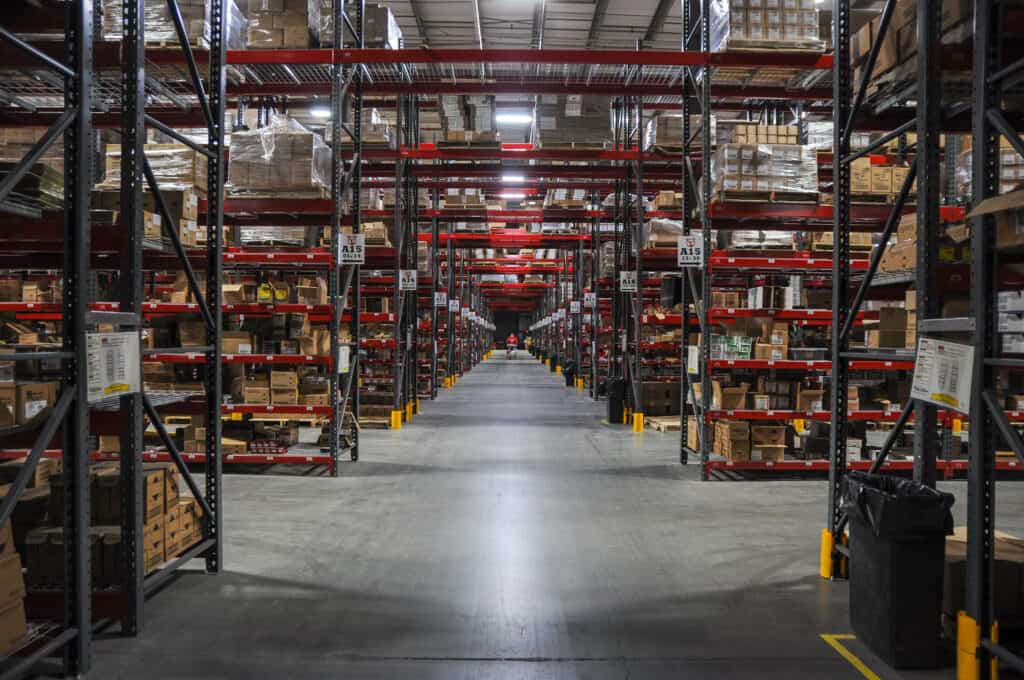
Supply chain tactics for keeping lead and cycle times to a minimum
It’s essential to look at your entire process, from raw materials through the manufacturing process to fulfillment and delivery, to lower the average time to fill customer orders. Poor supply chain coordination or inventory management glitches can lead to stockouts and backorders. That reduces customer satisfaction and can vastly increase the lead time to fill an order. Here are three tactics to reduce order cycle time before your products reach the order fulfillment process.
Increase supply chain visibility
Having visibility into every element of your supply chain allows you to spot potential problems and act to head them off. Understanding the lead time for sourcing raw materials, manufacturing finished goods, and transporting them from the factory to the 3PL will help you run a supply chain that is both lean and able to deliver the products you need at the right times.
Reassess safety stock levels and EOQ often
Dynamic inventory management is critical in an environment where consumer demand and supply can shift quickly. You need to hold enough safety stock to keep orders flowing in the event of transit or manufacturing slowdowns. But you don’t want to keep so much product on hand that you’re tying up excess capital in merchandise that might become outdated before you can sell it. The right amount of safety stock may vary by season and other factors, so the number might not be the same from one quarter to the next.
In addition, the inventory level at which you need to reorder can change with the velocity of your supply chain and orders. Economic order quantity (EOQ) can help you calculate when and how much you need to order to avoid stockouts.
Turn negatives into positives
Flexibility is an asset in today’s tumultuous environment. Be prepared to pivot, switch suppliers, change formulas, and sell the change to your customers as a benefit. Lean hard on the products you do have, and you might be surprised at the adaptability of your loyal customers.
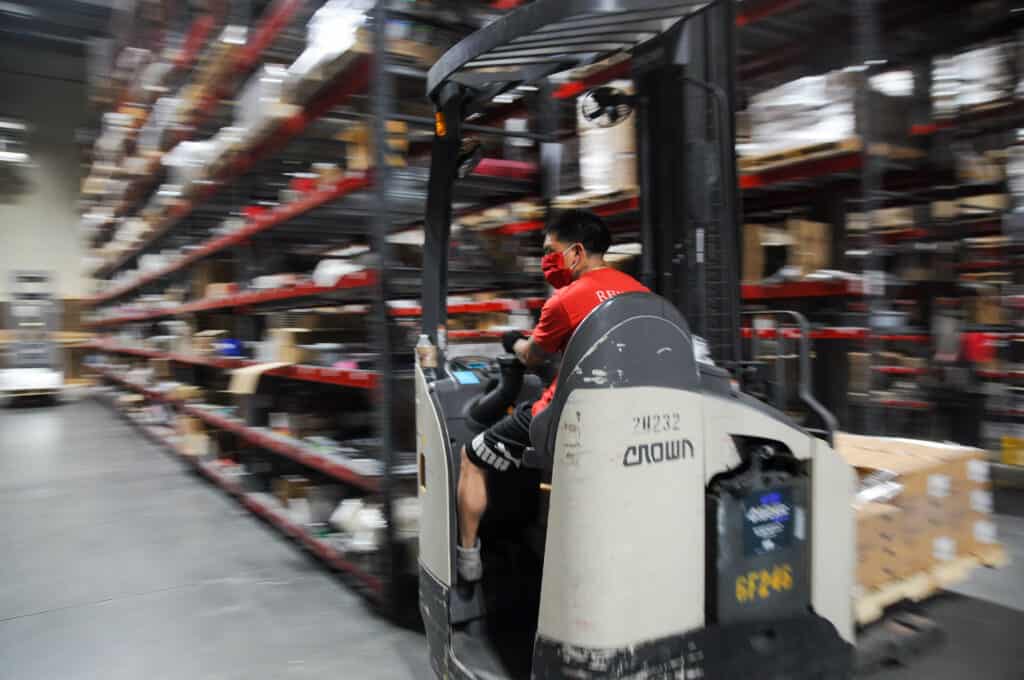
5 ways third-party logistics can reduce customer order cycle time without losing quality
Facebook’s original motto was, “Move fast and break things.” Today’s theme for eCommerce fulfillment could be, “Move fast and DON’T BREAK ANYTHING.” Brands need to add speed to the customer order cycle time without sacrificing order accuracy and fulfillment quality.
Outsourcing your fulfillment to a 3PL dedicated to providing order fulfillment services is an excellent way to reduce your cycle time while improving fulfillment accuracy. Here are five ways superior third-party logistics can help you run your business better and increase customer satisfaction.
Reduce putaway time
Putaway time is the time it takes a 3PL to process inbound inventory. The quicker your warehouse can move inbound shipments from the receiving dock to ready-to-pick on the shelf, the fewer delays you’ll have in your order fulfillment process. For example, Red Stag Fulfillment guarantees that we will move your inventory from dock to stock within two business days. If we don’t, we pay you $50.

Improve inventory accuracy
If you don’t have correct data about what’s in your fulfillment centers, your EOQ and reorder calculations won’t be accurate. Shrinkage can throw your inventory management off. However, a top 3PL can help you improve inventory accuracy in two ways:
- Proper product handling will reduce inventory shrinkage due to warehouse damage.
- Professional security procedures can reduce loss due to theft or misplaced items to nearly zero.
In 2021, Red Stag Fulfillment’s inventory accuracy rate was 99.991%, so our clients had a precise view of what they had on our warehouse shelves.
Use kitting to pre-package common multi-item orders
Kitting is the process of packaging grouped products or SKUs before the customer places an order. The kitting process works well for items that customers frequently order together or for items that you market as sets under a new SKU. Kitting helps reduce customer order cycle time because, instead of picking several items from different locations, the picker can pull the group from a single site.
Optimize pick list methods
Pick lists are generated by the 3PL’s warehouse management system software, and picking methods can significantly impact customer order cycle time. For example, batch picking gives the warehouse worker multiple orders with the same or similar SKUs to pick together, which is much faster than sending the picker on repeat visits to piece-pick orders.
Wave picking can reduce order fulfillment cycle time by having workers pick batches of orders within a specific warehouse zone. They then hand off the orders to pickers in the next zone, so each picker has a shorter walking path to pull orders.
However, with the help of a 3PL like Red Stag Fulfillment, you don’t need to know the difference between batch picking and wave picking because our fulfillment professionals will design a process that gives you the most efficient order cycle time.

Provide same-day fulfillment service options
The speed with which your 3PL handles orders is critical to customer order cycle time. For instance, suppose your orders sit for several days before they reach the front of the fulfillment queue. In that case, the order fulfillment cycle time adds to the customer’s perceived delivery time and harms the customer experience.
Red Stag Fulfillment provides reliable same-day order fulfillment services, ensuring your customers’ orders are picked, packed, and shipped the same day they’re placed. We back this with a $50 guarantee if your order isn’t shipped on time. In 2021, Red Stag Fulfillment successfully shipped 99.965% of orders on time and in full, making us a trusted partner for fast and accurate e-commerce fulfillment
Implement multi-carrier parcel management
A 3PL that offers flexible carrier selection can help you cut down on the time it takes to ship each order. Also called multi-carrier parcel management, this reduces customer order cycle time by picking the best carrier for each package. For example, FedEx might place a particular address in Zone 3 while UPS lists the same address in Zone 2. In that case, UPS may be able to deliver the order more quickly. And you can save money on shipping, too.
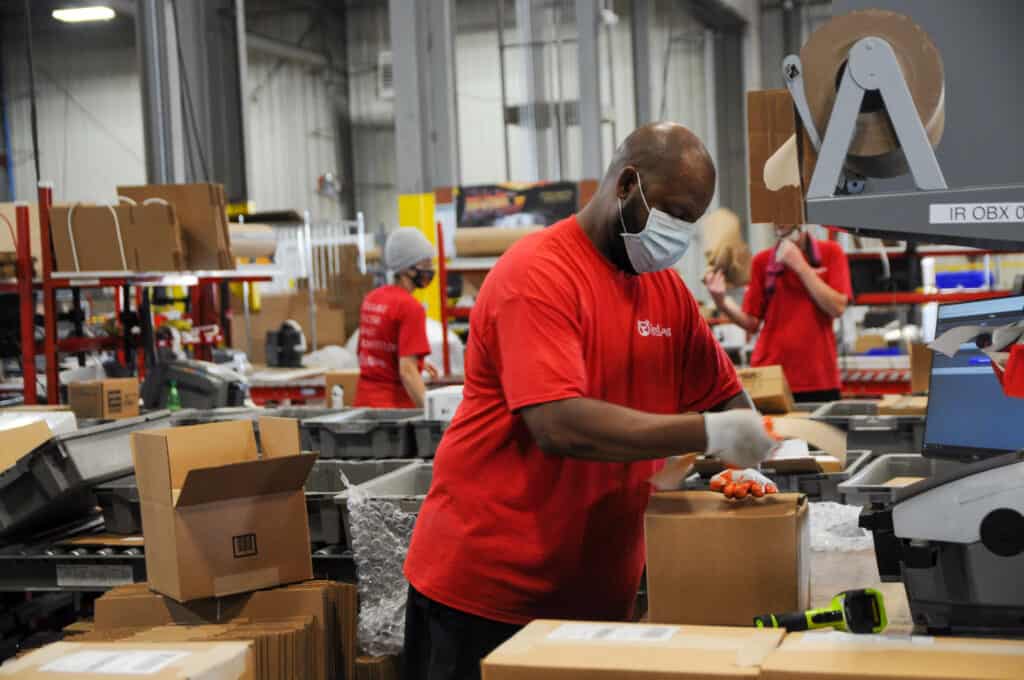
Get Agile 3PL services with Red Stag Fulfillment
Agile management is revolutionizing business processes, and it can help you lower your customer order cycle time. Red Stag Fulfillment is dedicated to lean and Agile management practices, and we use that philosophy to identify new ways to help your business grow and scale.
Of course, a shorter order cycle time is only one of many benefits of outsourcing your fulfillment to Red Stag. Our fulfillment guarantees help ensure that your business grows without the drag that inadequate fulfillment can place on an online store. Get started today.
More about the order fulfillment cycle:









